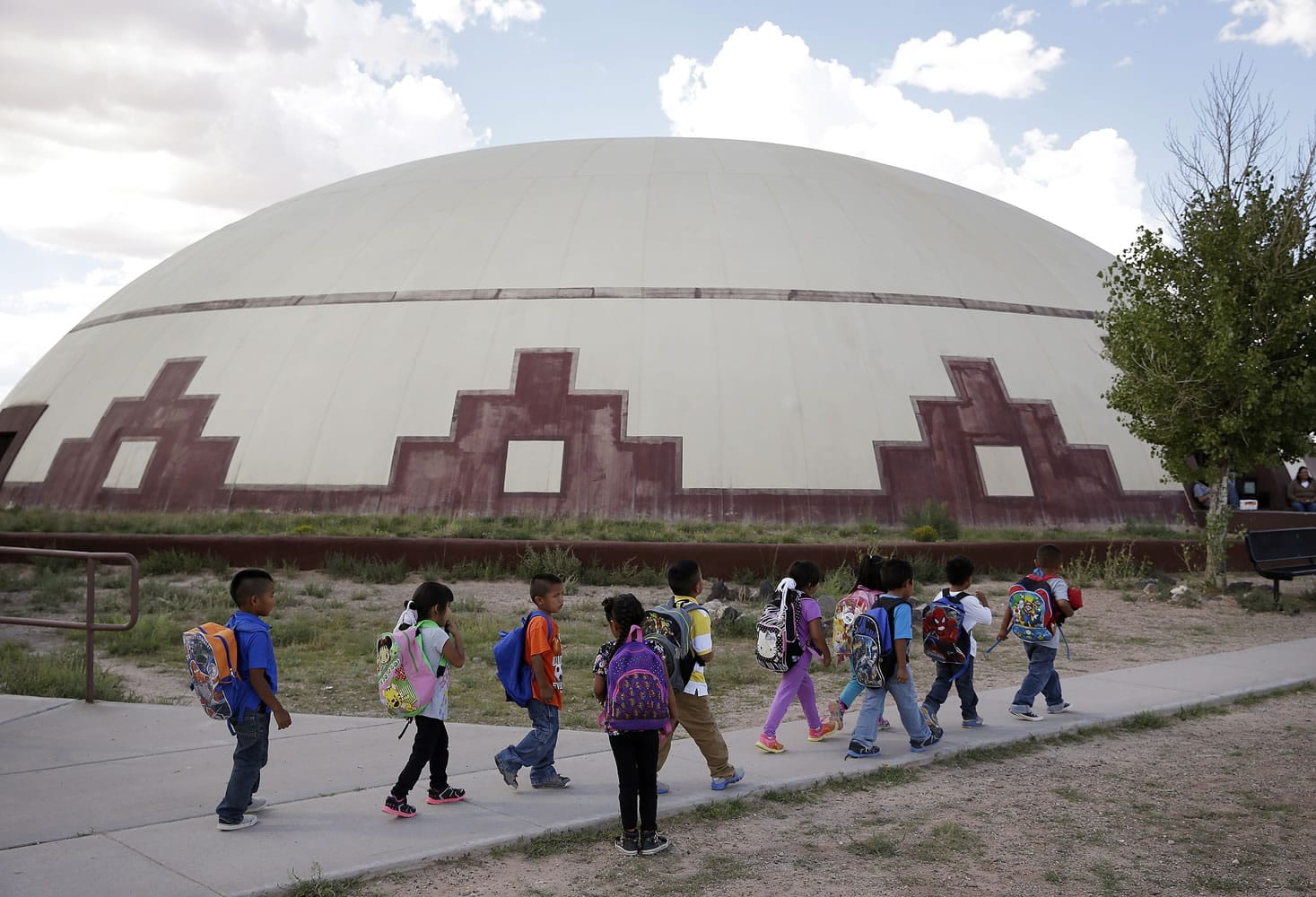WINSLOW, Ariz. — Federally owned schools for Native Americans on reservations are marked by remoteness, extreme poverty and a lack of construction dollars. They also are among the nation’s lowest performing.
The Obama administration is pushing ahead with an improvement plan that gives tribes more control. But the effort is complicated by the disrepair of so many buildings, not to mention the federal legacy of forcing American Indian children from their homes to attend boarding schools.
Consider Little Singer Community School, with 81 students on a remote desert outpost. The vision for the school came in the 1970s from a medicine man who wanted area children to attend school locally. Here’s the reality today: a cluster of rundown classroom buildings containing asbestos, radon, mice and mold.
Students often come from families struggling with domestic violence, alcoholism and a lack of running water at home, so nurturing is emphasized. The school provides showers, along with shampoo and washing machines.
Teachers have no housing, so they commute together about 90 minutes each morning on barely passable dirt roads.
The school is on the government’s priority list for replacement. It’s been there since at least 2004. Not even one-quarter of students were deemed proficient in reading and math on a 2012-2013 assessment.
“We have little to work with, but we make do with what we have,” says Verna Yazzie, a school board member.
The 183 schools are spread across 23 states and fall under the jurisdiction of the Interior Department’s Bureau of Indian Education.
They are in some of the most out-of-the-way places in America; one is at the bottom of the Grand Canyon, reachable by donkey or helicopter. Most are small, with fewer than 150 students.
Native Americans perform better in schools that are not overseen by the federal bureau than in schools that are, national and state assessments show. Overall, they trail their peers in an important national assessment and struggle with a graduation rate of 68 percent.
Already, tribes manage about 120 schools, and the plan will turn the rest over as Washington shifts to more of a support role.
The plan calls for more board-certified teachers, better Internet access and less red tape, making it easier to buy books and hire teachers. The Interior Department wants to help schools accelerate the use of Native American languages and culture.
Lofty ambitions, but the rundown state of many schools can’t be ignored.
More than 60 are listed in poor condition. An estimated $1.3 billion is needed to replace or refurbish these schools. But since the 2009 release of about $280 million in stimulus money, little has gone to major school construction or renovation.
So Interior Secretary Sally Jewell is in a tight spot.
She recently visited Crystal Boarding School on the Navajo reservation in Crystal, New Mexico, where some classes are held in a building constructed by Depression-era workers.
The school is now primarily a day school, but about 30 kids stay in dorms there. A second dorm was condemned.
Jewell thanked the students for “making do with this school the way it is.” Later, she told school leaders she could not promise the money will be there to build a new school.
“For schools throughout Indian country, this is a chronic problem,” she said. “I don’t want to stand here and make promises I can’t keep. What I want to say is, I get it.”
The effort to shift more control to tribes has drawn some praise. “It’s an important step for us to go ahead and take control over what we know we can do best,” says Kimberly Dominguez, Crystal’s vice principal.
Others, though, say Washington is merely washing its hands of its responsibilities.
Aubrey Francisco, 40, who attended Crystal and sends his 6-year-old son there, questions whether Navajo leaders can continue the school’s legacy. “With the tribe and its limited resources, they need to take that into account,” he said.
Ahniwake Rose, executive director of the National Indian Education Association, said her organization is cautiously optimistic, partly out of appreciation that Obama is seemingly engaged.
At Little Singer, Etta Shirley, the principal, said she also has some optimism. One glimmer of hope: A House spending bill contains nearly $60 million for construction at Little Singer and two other bureau schools.
“We need to get the kids out of the environment,” Shirley said. “That’s what’s really driving this. I lose sleep over it, just thinking about it.”



